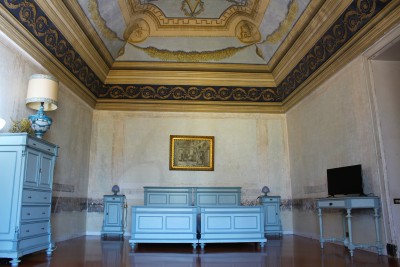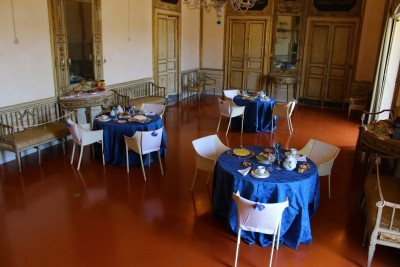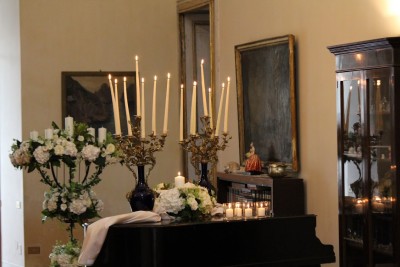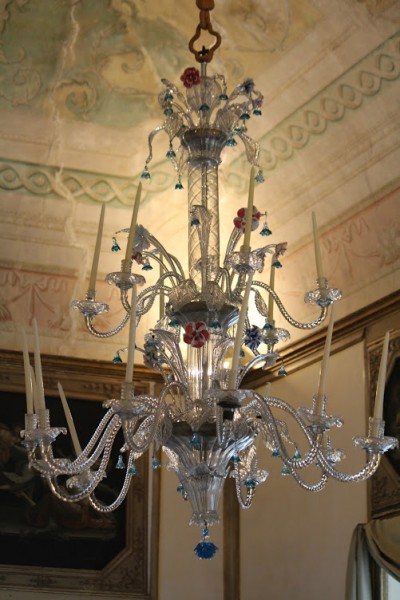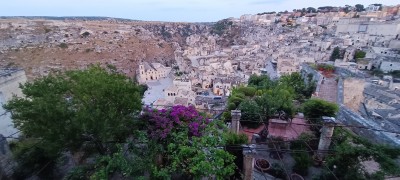Contact the abode
THE HISTORY OF PALAZZO BERNARDINI, FORMERLY KNOWN AS PALAZZO FERRAÙ
Palazzo Bernardini, historically known as Palazzo Ferraù and Palazzo Giudicepietro, dominates the Sassi rocks of Matera and is one of the rare examples still standing in Basilicata of a historical residence belonging to a patrician dynasty, namely the Ferraù family, which still preserves a significant portion of the original furnishings and decorative elements dating back to the late 1700s, up to 1802.
The structure was built around 1448 and includes a private home, now listed as a protected monument due to its historical and artistic value, comprising 17 rooms, the majority of which feature exquisite frescoes. The 'salone delle feste' ballroom gallery is the most notable highlight, which is adorned and furnished with authentic elements. The Ferraù family chose to invest part of their wealth in making this Palazzo in Matera a grand representation of the new cultural models that were emerging toward the end of the 18th century. Clear references to the exploration of Roman painting in the excavations of Pompeii and in Paris are evident. These references, which emanate from the major royal construction projects in Caserta, extended into the homes of the aristocracy in both the capital and the provinces.
The large barrel-vaulted hall includes 12 paintings on canvas, four mirrored frames above as many marble-topped consoles, all lacquered in white with gold ornamentation. White and gold characterise all the decorative elements of the salon and can be seen in the doors, the shutters, the frames of the mirrors and paintings, the upholstery, the armchairs and the sofas, which still retain their original yellow damask upholstery fabric. Chromatically, the white of the surfaces and the gold of the stuccoes dominate the scene, further enhanced by the early afternoon sunlight and the presence of tall mirrors and a large Murano crystal candle chandelier. From the bedroom window, visitors can admire breath-taking views of the famous Sassi of Matera, in particular the Rupe dell’Idris rocky outcrop and the Church of San Pietro Caveoso.
The Palazzo stands on the site where the outer defenses of the great Castle have existed since the year 1000. To the left of the current entrance of the historic Arco del Sedile arch, there is still a scarped structure from the defenses of the ancient Rocca fortress, from which young Loffredo left when called by Boemondo to depart for the First Crusade.
In the 1400s, this area was known as Castiglione or Castelvecchio, and was ruled by the Ursino del Balzo family. It dominated the city and, in particular, the Sasso Caveoso rock. The outer defences were composed of eight towers which were de-militarised in 1448 by Count Giovanni Antonio Ursino. The area was later used for the construction of the Malvezzi, Santoro and Ferraù residences, utilising materials gathered from the demolished defensive buildings.
The Ferraù family, an ancient noble dynasty from Matera, divided into various branches and separated over time. One group moved to Calabria during the Middle Ages, while another settled in the Altamura area. Records from 1732 show that the Palazzo was accessed from the Castiglione, as this is stated in the Ostiario Cadastre land registry documentation, and it was inhabited at that time by Don Giuseppe Ferraù, his wife and their eleven children.
The current entrance facing Piazza Sedile was built on the occasion of the visit of King Giuseppe Buonaparte, Napoleon's brother, who stayed in Matera on 30 May 1806, following his appointment as the King of the Two Sicilies and his desire to travel to some of the cities within his realm. Upon his arrival in Matera, he was greeted with great enthusiasm by the citizens and was hosted in Palazzo Ferraù. To celebrate this momentous event, the central hall of the Palazzo was elaborately adorned with white and gold stucco decorations, and the walls were covered with precious white and yellow fabrics, all embellished with depictions of mythological scenes.
A grand ball was held in this salon, attended by the officials of the Royal Court and the most prominent families of the city. However, despite this royal welcome, Giuseppe Bonaparte subsequently treated the city very poorly, as the Royal Court was transferred from Matera to Potenza shortly thereafter at his request, and a few years later, Matera was also deprived of its court, which was only re-established in 1861.
The Firraù family, as they were named, continued to reside in the Palazzo throughout the 1800s. Some of the members of the branch that had moved to Altamura joined the Neapolitan Republic. With the arrival of Cardinal Ruffo, young Giovanni Firraù was identified as a Republican and was executed by the cardinal himself in the presence of his elderly father.
The Matera branch of the family always engaged in commendable administrative activities, and several of its members excelled in various fields. Among them, Giambattista was a man of letters and has left behind many publications after holding public public. Cesare, who was the younger of the two brothers, pursued his education in Naples. He went on to become an officer in the military engineering division, where he contributed to the development of military engineering works and projects. His name became famous for the construction of railroads in Italy, as he was part of the team responsible for designing and building the country’s first railway and the section between Naples and Caserta.
Palazzo Ferraù was later inherited by the Giudicepietro family, merchants from Castellaneta who had settled in Matera.
In 1973, Carlo Giudicepietro transferred ownership of the Palazzo to Professor Aldo Bernardini, who, together with his wife, Anna Rosa, undertook the restoration and preservation of Palazzo Bernardini as it is now called.
PALAZZO BERNARDINI EVENTS AND BED & BREAKFAST ACCOMMODATION
Palazzo Bernardini hosts unique and unforgettable events organised by Signora Anna Rosa with great care, refinement and simplicity in this historical residence’s elegant frescoed halls, including weddings, receptions, gala dinners, lunches, conferences, conventions, meetings, exhibitions, concerts, cultural events, photo and film shoots and cooking courses.
The Bed & Breakfast was inaugurated in September 2018 by Signora Anna Rosa, who decided to open three beautiful suites of her historical Palazzo to the public to celebrate Matera’s being chosen as the European Capital of Culture in 2019.
Palazzo Bernardini Bed & Breakfast is located in the Sassi of Matera, in the historic center, overlooking Piazza del Sedile, which acts as a link between the two Sassi of Matera: Caveoso and Barisano.
The historic home is located just a few hundred metres from the Cathedral of Matera, the Church of San Francesco d'Assisi, the Music Conservatory, the MOMA Museum and the city centre.
Palazzo Bernardini, which belonged to a patrician family (named respectively Ferraù, Firraù and Firrao), still preserves a significant portion of the original furnishings and decorative elements dating from the late 18th century to 1802. The oldest part of the building dates back to 1448.
Signora Anna Rosa is keen to offer her guests a warm welcome and the opportunity to experience a historical stay in Matera at her Palazzo, giving them the possibility of savouring a family-like atmosphere and all the colours and flavours of a bygone era.
For further information, please consult the website: www.palazzobernardinimatera.it/en/home/.

